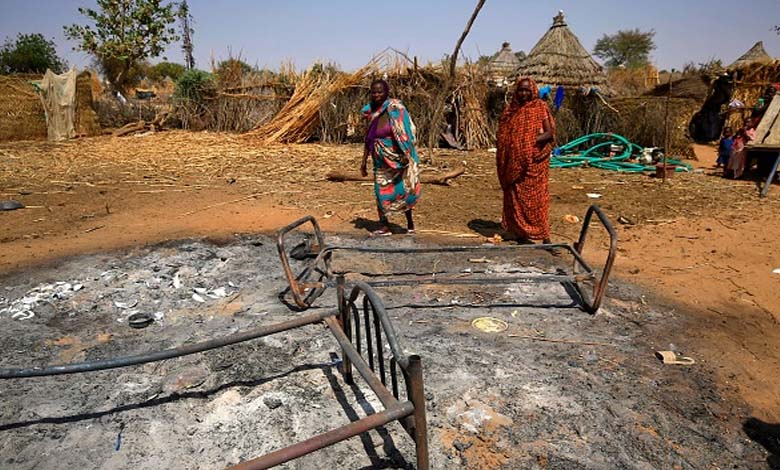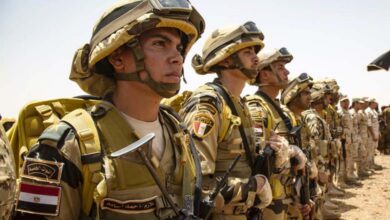Sudan: Reliable Evidence Unveiled of Chemical Weapons Used to Kill and Maim Hundreds of Civilians Including Children in Darfur

A detailed and carefully conducted investigation published by Amnesty International in early 2025 gathered documented evidence implicating Sudanese government forces in repeated and deliberate use of chemical weapons against civilians, including infants, in the remote Jebel Marra region of Darfur state. The over eight-month inquiry revealed blatant violations of international humanitarian law, involving the use of corrosive and lethal agents, showcasing a flagrant disregard by the Sudanese government for international treaties and laws.
-
The Sudanese Army Under Scrutiny: Systematic Violations Against Civilians and Suspicions of Chemical Weapons Use
-
Chemical Weapons in the Army’s Hands: Sudan on the Brink of a Perfect Crime
At least 30 chemical attacks since January 2016
The investigation relied on over 200 interviews with survivors and eyewitnesses, technical analysis of satellite imagery, and expert examination of victims’ physical symptoms—fully consistent with exposure to internationally banned chemical agents such as sulfur mustard and lewisite.
Amnesty International concluded that no fewer than 30 chemical attacks occurred in Jebel Marra since January 2016, as part of a large-scale military operation launched by the government under the pretext of combating the Sudan Liberation Army / Abdel Wahid Mohamed Nour faction.
-
The Kizan’s Betrayal of the Sudanese People: A Truth That Cannot Be Hidden
-
Hunger, Displacement, and War: The Triangle of Terror in Darfur
Tirana Hassan, Crisis Response Program Director at Amnesty International, said:
“It is hard to put into words the scale and brutality of these attacks. The images and videos we have seen during our research are truly horrific; one video shows a small child screaming in pain before dying; many images depict children covered in wounds and blisters.”
Victims: between slow death and chronic illness
Estimates indicate that between 200 and 250 people have died due to exposure to these chemical substances, most of them children under the age of ten. Survivors suffer severe health symptoms including:
-
Casualties in Latest Sudanese Army Airstrikes on Three Areas in Darfur
-
War and Famine: Sudan’s conflict drives Darfur to the brink
- Bloody vomiting and diarrhea,
- Extensive skin damage with blistering, peeling, and burns,
- Severe respiratory problems, the primary cause of death,
- Complete or partial loss of vision,
- Persistent pain even after medication.
-
Army Airstrikes Hit Kutum Educational Hospital in North Darfur
-
The Sudanese army targets schools and kills innocents in North Darfur
The report recounts heartrending stories of victims and their families, including a woman in her twenties who said: “When the bomb fell, there were tongues of flame then thick black smoke… immediately I began vomiting and feeling dizzy… my skin is no longer normal. I still have headaches even after taking medicine… my baby is not recovering… swollen… covered in blisters and wounds… they said he would get better… but it never happened.”
Another woman in her thirties from Boro village described how the color of the smoke changed from black to blue after the explosion, and how all her children suffered severe symptoms including “vomiting, diarrhea, intense coughing, and their skin turning black as if burned.”
-
Will the Sudanese Army and the Muslim Brotherhood Succeed in Igniting a Civil War in Darfur?
-
Burning children alive: War in Darfur sparks new fears of genocide
Evidence points to use of banned chemical weapons
Amnesty International submitted the evidence to two independent chemical weapons experts, who confirmed that the symptoms seen among victims match exposure to corrosive and burning chemical agents used in chemical warfare.
Tirana Hassan commented: “This suspected use of chemical weapons not only marks a new low in the crimes committed by the Sudanese army against civilians in Darfur but also represents a new level of arrogance toward the international community. The use of chemical weapons is a war crime.”
-
Thousands flee from Darfur to Chad amid renewed ethnic conflict
-
The Cursed Land: Sudanese Displaced Reject Return to Darfur
Widespread destruction and human rights violations
Alongside chemical attacks, Amnesty International documented deliberate bombings of civilians, mass rapes, summary killings, forced displacement, and organized looting. A total of 171 villages were destroyed or severely damaged during the military campaign, despite the absence of declared armed presence in most of them at the time of attack.
The report noted that 367 civilians, including 95 children, were killed in the first half of the current year alone, with others dying from starvation or lack of medical care due to siege and ongoing attacks.
-
Sudanese from Darfur face difficult challenges during their escape
-
Sudan: Emergency and curfew in South Darfur after deadly tribal clashes
Technical collaboration to document crimes
In an unprecedented move, Amnesty International partnered with SITU Research to develop an interactive digital platform combining satellite imagery,
witness testimonies, and geographic data analysis to highlight ongoing violations in this hard-to-reach region.
Tirana Hassan explained: “The world has stopped watching Darfur, but the crimes have not stopped. Scorched earth, mass rape, killings, bombs — these are the same war crimes committed in Darfur in 2004 when the world first woke up to what was happening there.”
-
Severe confrontations in Sudan’s Darfur
-
Targeted Strikes in Port Sudan Reveal Tactical Shift by Rapid Support Forces
UN calls for immediate action
Amnesty International called on the UN Security Council to:
- Apply political pressure on the Sudanese government to allow peacekeeping missions and humanitarian organizations access to affected areas,
- Ensure full enforcement of the weapons ban in Darfur and expand it nationwide,
- Conduct an independent and urgent investigation into the use of chemical weapons, and hold those responsible accountable if evidence is confirmed.
-
Sudanese Army Under Fire: Allegations of Civilian Abuses and Obstruction of Humanitarian Aid Amid International Calls to End the War
-
The Situation in Sudan: The Army and the Islamic Movement in an Unstable Scene
Background: media isolation and regulatory barriers worsening the crisis
Jebel Marra is one of the world’s most perilous humanitarian environments. The Sudanese government imposes strict restrictions on journalists and international investigators, making documentation of violations extremely challenging.
Therefore, Amnesty International relied on 235 phone interviews assisted by local intermediaries and contacted several victims multiple times to verify accounts.
-
The Political History of the Islamic Movement in Sudan and Its Relationship with the Army: The Case of al-Burhan
-
Humanitarian Crossings in Sudan: A Relief Map Shackled by the Army’s Political Pressure
Call to action: “Decoding” project launches in 2025
As part of ongoing efforts to uncover the truth, Amnesty International announced a new project called “Decoding” shortly after the report’s release. The initiative aims to recruit thousands of digital volunteers worldwide to analyze satellite images of Darfur, identifying villages that appear attacked or destroyed.
Amnesty International’s investigation reveals systematic brutality against civilians in Darfur, involving deliberate and repeated use of chemical weapons, constituting a gross violation of international law and a war crime for which the Sudanese government must be held accountable. With violations escalating, the pressing question remains: will the world stay silent?
-
Looting Theft and Murder… Sudanese in Army-Held Areas Crushed by Hardship
-
Signs of Discord Shake Sudan’s Army and Its Allies… Is the Alliance Falling Apart?












